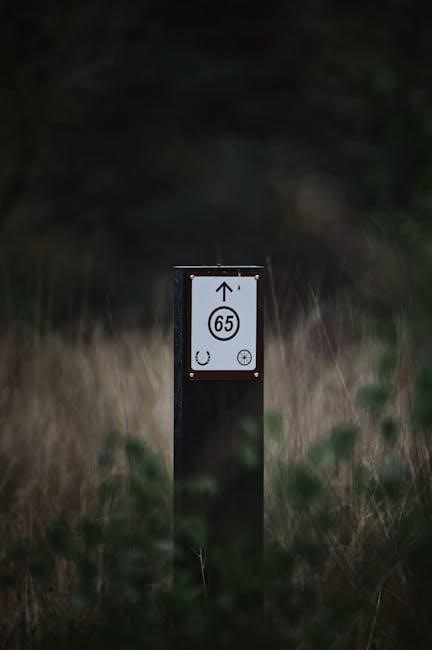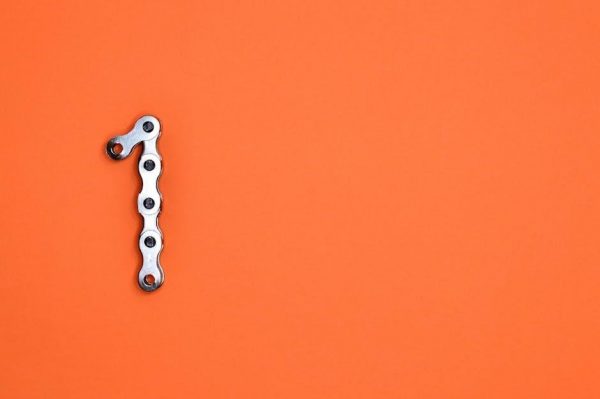The EarthBox is a self-watering container gardening system designed for efficient plant growth in small spaces. It uses a potting mix and fertilizer to promote healthy‚ high-yield plants.
1.1 Overview of the EarthBox System
The EarthBox system is a self-watering‚ container-based gardening solution designed to optimize plant growth. It features a built-in water reservoir‚ aeration tubes‚ and a specially formulated potting mix; This innovative design ensures consistent moisture levels‚ reducing the frequency of watering while promoting healthy root development and robust plant growth.
The system is ideal for small spaces‚ such as balconies or patios‚ and requires minimal maintenance. Its structured approach to planting‚ fertilizing‚ and watering makes it accessible for gardeners of all skill levels‚ ensuring high yields and vibrant plant health throughout the growing season.
1.2 Benefits of Using an EarthBox for Gardening
The EarthBox system offers numerous advantages for gardeners. Its self-watering design ensures consistent moisture levels‚ reducing the need for frequent watering. This makes it ideal for busy individuals or those new to gardening. The system promotes healthy root growth and maximizes yields‚ even in small spaces like balconies or patios.
Additionally‚ the EarthBox is low-maintenance and adaptable to various planting needs. It supports a wide range of plants‚ from vegetables to flowers‚ and its structured approach to fertilization ensures optimal nutrient delivery. This innovative gardening method is both efficient and rewarding‚ making it a great choice for gardeners of all skill levels.
Assembling and Preparing Your EarthBox
Assemble your EarthBox by placing the water tube in the reservoir and filling with potting mix. Add fertilizer as directed for optimal plant nutrition and growth.
2.1 Step-by-Step Assembly Instructions
Begin by placing the water tube into the reservoir. Next‚ attach the aeration screen to ensure proper airflow. Fill the box with potting mix around the tube‚ leaving space at the top. Pack the mix gently to avoid settling. Finally‚ add the fertilizer as directed‚ ensuring even distribution for optimal plant growth. Follow these steps carefully for a well-prepared EarthBox system.
2.2 Preparing the Potting Mix and Fertilizer
Use a high-quality potting mix specifically designed for container gardening. Add 2 measured cups of fertilizer evenly across the EarthBox‚ placing it directly on top of the potting mix. Avoid adding extra fertilizer during the growing season‚ as the initial amount provides sufficient nutrients. Ensure the mix is evenly distributed to promote consistent moisture and nutrient delivery to the plants. Proper preparation ensures optimal growing conditions for your EarthBox garden.

Choosing the Right Plants for Your EarthBox
Select plants that thrive in container gardening‚ such as tomatoes‚ vegetables‚ and flowers. The EarthBox supports a variety of crops‚ ensuring high yields in minimal space.
3.1 Suitable Plant Varieties for EarthBox Gardening
EarthBox gardening supports a wide range of plants‚ including tomatoes‚ peppers‚ cucumbers‚ and leafy greens like lettuce and spinach. Herbs such as basil and mint also thrive in this system. Flowers like marigolds and zinnias can add color to your garden. These plants are ideal due to their compact growth habits and high yields in container settings. Always refer to the Plant & Fertilizer Placement Chart for specific recommendations.
3.2 Plant and Fertilizer Placement Chart
The Plant and Fertilizer Placement Chart provides a detailed guide for arranging plants and applying fertilizer in your EarthBox. It offers species-specific layouts to ensure optimal spacing and nutrient distribution. Use 2 measured cups of fertilizer per EarthBox‚ as indicated‚ to supply adequate nutrients for the growing season. Follow the chart for precise plant placement to maximize growth and yields.
Planting Instructions for Your EarthBox
Follow these step-by-step instructions to plant seedlings or seeds in your EarthBox. Start by assembling materials and inserting the fertilizer tube. Pack potting mix‚ then place plants according to the chart. Add 2 cups of fertilizer‚ ensuring proper placement for optimal growth. Avoid overwatering and follow spacing guidelines for best results.
4.1 How to Plant Seedlings or Seeds
Begin by placing seedlings or seeds in the EarthBox according to the Plant & Fertilizer Placement Chart. Gently pack potting mix around the roots to secure the plants. For seeds‚ sow them at the recommended depth and cover lightly. Ensure the fertilizer tube is properly positioned to deliver nutrients evenly. Water thoroughly after planting to settle the soil and provide initial hydration for optimal germination and growth.
4;2 Proper Spacing and Fertilizer Application
Ensure plants are spaced according to the EarthBox Plant & Fertilizer Placement Chart to maximize growth and prevent overcrowding. Apply 2 measured cups of fertilizer per EarthBox‚ placing it in the fertilizer tube for even distribution. Avoid over-fertilizing‚ as this can harm plant health. Proper spacing promotes airflow and reduces pest risks‚ while correct fertilizer application ensures balanced nutrient delivery for optimal plant development.

Watering Your EarthBox Garden
The EarthBox features a self-watering system with a built-in water reservoir‚ ensuring consistent moisture. Check the water level indicator and refill as needed to maintain optimal hydration.
5.1 How the Self-Watering System Works

The EarthBox self-watering system relies on a built-in water reservoir and aeration tube. Plants draw water from the reservoir through the potting mix as needed‚ ensuring efficient hydration. This wicking system prevents overwatering and maintains optimal moisture levels‚ promoting healthy root growth and reducing maintenance. The design ensures plants receive consistent water supply‚ making it ideal for gardeners seeking low-maintenance‚ high-yield results.
5.2 Tips for Proper Watering and Maintenance
Avoid overwatering by checking the reservoir regularly. Water only when the soil feels dry to the touch. Ensure the aeration tube remains unblocked for proper air circulation. Avoid getting water on leaves to prevent disease. Mulch can help retain moisture and regulate temperature. Inspect the system periodically for leaks or damage. Follow the recommended watering schedule and fertilizer guidelines to maintain optimal growth and prevent issues like blossom end rot.
Fertilization and Nutrient Management
Fertilization is key for healthy plant growth in EarthBox systems. Use 2 cups of recommended fertilizer per box to ensure optimal nutrient supply during the growing season.
6.1 Recommended Fertilizer Types and Amounts
Use 2 cups of balanced fertilizer per EarthBox to ensure optimal plant growth. Avoid over-fertilizing‚ as this can harm plants. Both regular and organic fertilizers work effectively. Apply the recommended amount during setup‚ as no additional fertilizer is needed during the growing season. This ensures a steady nutrient supply for healthy and productive plants throughout the season.
6.2 Avoiding Over-Fertilization During the Growing Season
Avoid adding extra fertilizer during the growing season‚ as the initial application is sufficient. Over-fertilization can cause nutrient imbalances‚ harming plant health. Stick to the recommended amounts to ensure optimal growth without risking damage to roots or soil quality. Monitor plant health and adjust only if specific deficiencies arise‚ following guidelines carefully to maintain a balanced nutrient supply.

Pest and Disease Management
Regularly inspect plants for pests like aphids‚ spider mites‚ and whiteflies. Use organic controls or insecticidal soap to prevent infestations. Maintain cleanliness and proper airflow to reduce disease risks.
7.1 Common Pests in EarthBox Gardens
Common pests in EarthBox gardens include aphids‚ spider mites‚ whiteflies‚ and mealybugs. These pests can damage plants by feeding on leaves‚ stems‚ or sap‚ leading to stunted growth and reduced yields. Regular inspection is crucial to identify infestations early‚ as pests can multiply quickly in container systems. Use organic or chemical controls promptly to prevent severe damage and maintain plant health.
7.2 Preventing and Treating Diseases
Diseases in EarthBox gardens often arise from overwatering or poor air circulation. To prevent fungal and bacterial issues‚ ensure proper spacing between plants and avoid overhead watering. Use high-quality potting mix and fertilizers‚ and avoid contaminated water. Treat infections promptly with natural predators or organic fungicides. Regularly monitor plants for signs of disease‚ such as yellowing leaves or black spots‚ and remove infected areas to prevent spread.

Seasonal Care and Maintenance
Regular watering‚ fertilization‚ and mulching are essential for maintaining healthy plants. Ensure proper air circulation to prevent diseases and optimize growth throughout the growing season.
8.1 Summer Care Tips
During summer‚ ensure consistent watering and maintain proper mulch layers to regulate soil temperature. Monitor for pests and diseases‚ and provide shade if temperatures exceed 90°F. Regularly inspect the self-watering system to prevent clogging. Rotate plants for even sunlight distribution and avoid over-fertilizing‚ as this can stress plants during high heat. Keep the EarthBox in well-ventilated areas to promote healthy growth.
8.2 Winter Preparation and Storage
To prepare your EarthBox for winter‚ clean it thoroughly and remove any leftover plants or potting mix. Rinse with water and let it dry completely. Store the EarthBox in a cool‚ dry place‚ protected from freezing temperatures. Avoid leaving water in the reservoir to prevent freezing damage. Proper storage ensures your EarthBox remains in good condition for the next growing season.

Common Mistakes to Avoid
Avoid common mistakes like incorrect plant placement and improper fertilizer application‚ which can significantly hinder plant growth and reduce yields in your EarthBox garden.
9.1 Overwatering or Underwatering
Overwatering can cause root rot and nutrient leaching‚ while underwatering may stress plants‚ reducing yields. Monitor the water reservoir and soil moisture to maintain optimal hydration levels for healthy plant growth in your EarthBox garden. Avoid frequent watering and rely on the self-watering system to regulate moisture effectively. Proper water management ensures robust plant development and prevents common growth issues.
9.2 Incorrect Plant Placement and Spacing
Incorrect plant placement and spacing can lead to overcrowding‚ reducing air circulation and sunlight exposure. This may result in poor growth and increased susceptibility to pests and diseases. Refer to the Plant and Fertilizer Placement Chart for proper spacing guidelines. Avoid placing too many plants in one EarthBox‚ as this can disrupt the balanced growing environment and lower overall yields significantly;
Troubleshooting Common Issues
Identify root causes of plant problems‚ such as overwatering or nutrient deficiencies‚ and adjust care accordingly to ensure healthy growth and maximize yields in your EarthBox garden.
10.1 Diagnosing Plant Problems
Common issues in EarthBox gardens include overwatering‚ nutrient deficiencies‚ and pest infestations. Check for yellowing leaves‚ wilting‚ or stunted growth. Inspect the soil moisture and fertilizer levels. Look for pests like aphids or whiteflies. Diagnose root problems by gently removing the plant to examine the roots. Adjust watering schedules or fertilization based on observations to restore plant health.
10.2 Solutions for Poor Growth or Low Yields
To address poor growth or low yields‚ ensure proper fertilizer application and avoid overwatering. Adjust plant spacing and verify adequate sunlight exposure. Replace depleted potting mix if necessary. Monitor for pests and treat promptly. Check the self-watering system for functionality. Provide support for climbing plants and maintain optimal temperatures. These steps can help restore plant health and improve productivity in your EarthBox garden.
Advanced Tips for Maximizing Yields
Optimize plant density‚ use mulch for temperature regulation‚ and ensure proper crop rotation. Train vining plants vertically and prune regularly to enhance growth and productivity in your EarthBox.
11.1 Optimal Plant Density and Arrangement
Optimal plant density and arrangement are crucial for maximizing yields. Use the Plant & Fertilizer Placement Chart to ensure proper spacing and avoid overcrowding; This allows for adequate air circulation and sunlight penetration‚ promoting healthy growth. By arranging plants according to their mature size and growth habits‚ you can minimize waste and maximize productivity‚ ensuring each plant thrives in its allocated space for higher yields.
11.2 Using Mulch for Temperature Regulation
Using mulch is an effective way to regulate soil temperature in your EarthBox. It helps maintain consistent moisture levels and prevents extreme temperature fluctuations. Apply a 1-2 inch layer of organic mulch like bark chips or straw around plants. This practice promotes root health‚ reduces soil evaporation‚ and suppresses weed growth‚ ensuring optimal growing conditions for your plants throughout the season.
With proper setup and care‚ EarthBox gardening offers bountiful harvests. For more detailed guidance‚ explore EarthBox’s official resources and community forums for expert tips and troubleshooting.
12.1 Final Tips for Successful EarthBox Gardening
Consistently monitor plant health and adjust care routines as needed. Refer to EarthBox’s official guides and forums for tailored advice. Regularly clean and maintain your system to prevent issues. Additionally‚ learn from each growing season to refine techniques and enhance future harvests.
12.2 Recommended Guides and Online Resources
Visit EarthBox’s official website for comprehensive guides and resources. Download their detailed PDF manuals for step-by-step instructions. Explore the Plant & Fertilizer Placement Chart for optimal plant arrangement. Join EarthBox forums and community groups for shared experiences and troubleshooting tips. Check out instructional videos on YouTube for visual assembly and planting guidance.




